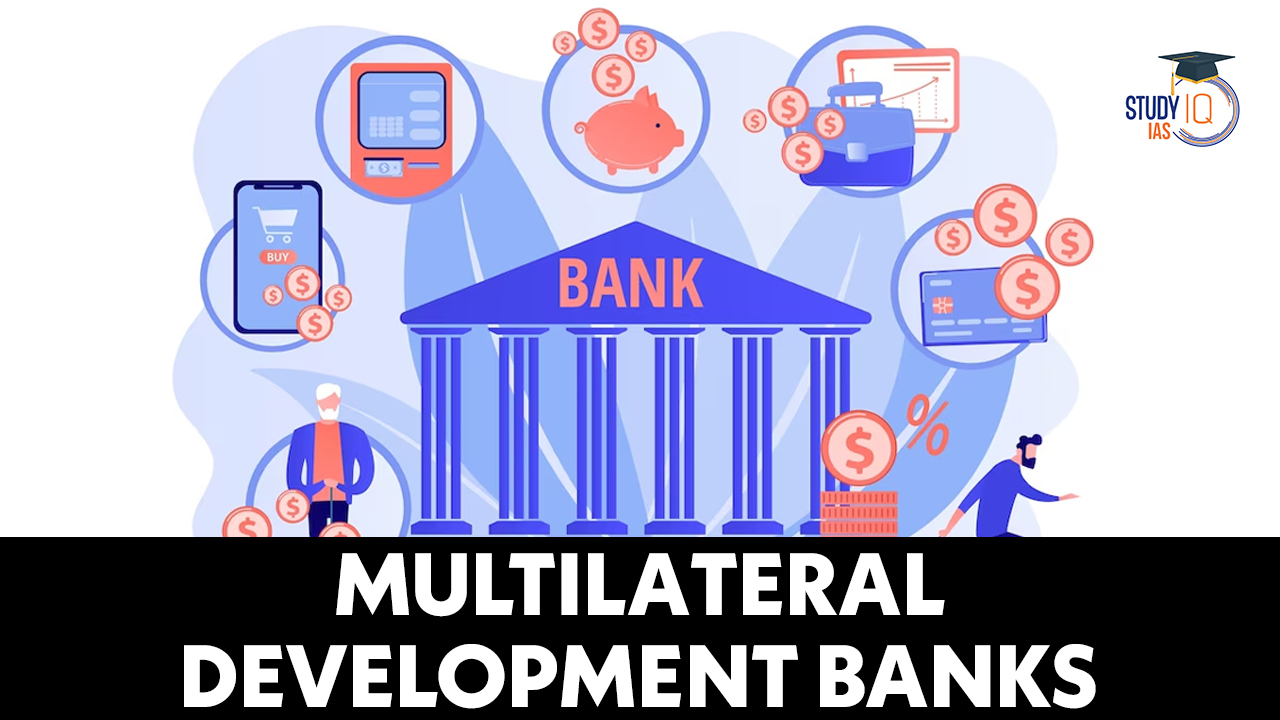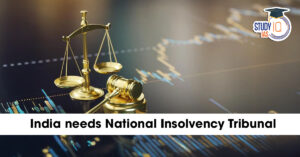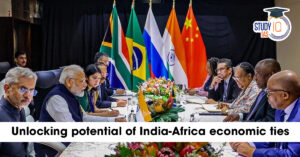Table of Contents
Context: While addressing a G-20 event in Mumbai, the finance minister stated that the main focus of India’s G-20 Presidency in 2023 has been to strengthen Multilateral Development Banks (MDBs) in order to address shared global challenges.
What are Multilateral Development Banks (MDBs)?
- A multilateral development bank (MDB) is an international financial institution chartered by two or more countries for the purpose of encouraging economic development in poorer nations.
- MDBs provide loans and grants to member nations to fund projects that support social and economic development, such as the building of new roads or providing clean water to communities.
- MDBs originated in the aftermath of World War II to rebuild war-ravaged nations and stabilize the global financial system.
- While commercial banks seek to make profits on loans and other financial services, the goal of MDBs is to issue grants and low-cost loans to improve the economic conditions of impoverished or developing nations.
- MDBs now operate throughout the world and control trillions of dollars in assets.
Major Multilateral Development Banks
| World Bank Group (WBG) | The World Bank was established in 1944 to help rebuild Europe and Japan after World War II. The World Bank is one of the largest and most well-known MDBs. It consists of five institutions:
|
| International Monetary Fund (IMF) |
|
| Asian Development Bank (ADB) |
|
| New Development Bank (NDB) |
|
| European Bank for Reconstruction and Development (EBRD) |
|
| African Development Bank (AfDB) |
|
Significance of MDBs
- Financing Development: MDBs provide funding for development projects that might not otherwise attract sufficient investment from the private sector or national budgets.
- Global Partnerships: MDBs foster partnerships with governments, private sector entities, civil society organizations, and other stakeholders which encourages collective action.
- Addressing Global Challenges: MDBs contribute to addressing global challenges such as climate change, health crises, and infrastructure gaps.
- Catalyzing Private Investment: MDBs play a role in attracting private sector investment by providing guarantees, co-financing, and technical assistance that mitigate risks and create a conducive investment environment.
- Capacity Building: MDBs assist member countries in building institutional capacity, improving governance, and enhancing policy frameworks.
- Promoting Sustainable Development: MDBs promote sustainable development by integrating environmental and social considerations into their projects and programs.
Need for Reforms in MDBs
- Outdated Institutional Framework: The current legal and institutional framework of many MDBs was designed in the post-war era to address reconstruction and development needs. This framework may not adequately address contemporary challenges and aspirations, especially those of the Global South.
- Inclusive and Sustainable Development: The development landscape has shifted from a focus solely on economic growth to a broader emphasis on inclusive and sustainable development. MDBs need to realign their strategies and practices to promote social inclusivity, environmental sustainability, and resilience.
- Complex Development Needs: Developing countries face a diverse range of challenges, from poverty and inequality to climate change and conflict. MDBs need to reform to offer tailored and flexible solutions that can address these complex and varied development needs.
- The WBG estimates that the average annual spending needed to address global challenges of climate change, conflict, and pandemics is $2.4 trillion per year for developing countries between 2023 and 2030.
- Inadequate representation: Many MDBs have governance structures that may not reflect the changing global balance of power and influence. Reforms are needed to ensure better representation of the interests and voices of developing countries in decision-making processes.
- Rapid Technological Changes: The digital revolution has transformed economies and societies. MDBs need to incorporate technology and innovation into their strategies to harness their potential for development, including digital financial services and e-governance.
Challenges for Reforming MDBs
- Diverse Member Interests: MDBs have a diverse membership of countries with varying priorities, ideologies, and development needs. Reaching consensus on reform measures that satisfy all member states can be challenging.
- Resource Constraints: Implementing reforms often requires financial resources for changes in policies, processes, and capacity-building.
- External Influences: Geopolitical factors, global economic conditions, and changes in international development discourse can influence the direction and pace of reforms.
- Member Countries’ National Interests: Countries have their own national interests in mind, which might not always align with the broader development goals of MDBs. Balancing these interests with the collective mission of MDBs can be complex.
- Procedural Constraints: MDBs often face criticism for being trapped in bureaucratic procedures, which can slow down project implementation and decision-making.
- Mobilizing Private Sector Investments: MDBs face challenges in mobilizing private sector investments for development projects. They need to create an enabling environment that attracts private capital by addressing risks and providing financial incentives for private sector engagement.
Implications for India
- Advocating the Voice of the Global South: India, as a leader from the Global South, has an essential role in advocating for necessary reforms that reflect the perspectives and needs of developing countries.
- G20 Platform: India’s G20 presidency and the formation of the Expert Group on Strengthening MDBs aims to bring coherence to various efforts and initiatives to enhance the effectiveness of MDBs.
- India is also a major borrower and beneficiary of MDBs, especially the World Bank Group and the Asian Development Bank.
- India has received loans and grants from these institutions for various sectors such as infrastructure, health, education, agriculture, etc.
- India is also a contributor and shareholder of MDBs.
- India has provided capital and resources to these institutions to support their operations and lending capacity.
- India has also participated in their governance and decision-making processes.
Way Forward
- Broadening Mandate and Vision: MDBs need to expand their mandate beyond traditional goals of poverty reduction and shared prosperity. This expansion should encompass challenges like transboundary issues, climate change, and pandemics.
- Balancing Priorities: While broadening the mandate, it’s essential not to compromise the funding available for traditional priorities such as poverty alleviation and inequality reduction, especially in Low-Income Countries (LICs).
- Mobilizing Private Capital: MDBs need to create an environment that attracts private capital by mitigating risks associated with investment. Approaches such as blended finance and guarantees should be explored.
- Coordination Among MDBs: MDBs should work in close coordination with each other to avoid duplication of efforts and enhance efficiency in addressing global challenges.
- Stakeholder Integration: The overarching goal of reforming MDBs is to enhance human welfare. This requires deeper integration with various stakeholders, including governments, private sector, civil society, and international organizations.


 Micrometeoroids: Tiny Space Particles, M...
Micrometeoroids: Tiny Space Particles, M...
 India Needs a National Insolvency Tribun...
India Needs a National Insolvency Tribun...
 Unlocking the Potential of India–Afric...
Unlocking the Potential of India–Afric...

























